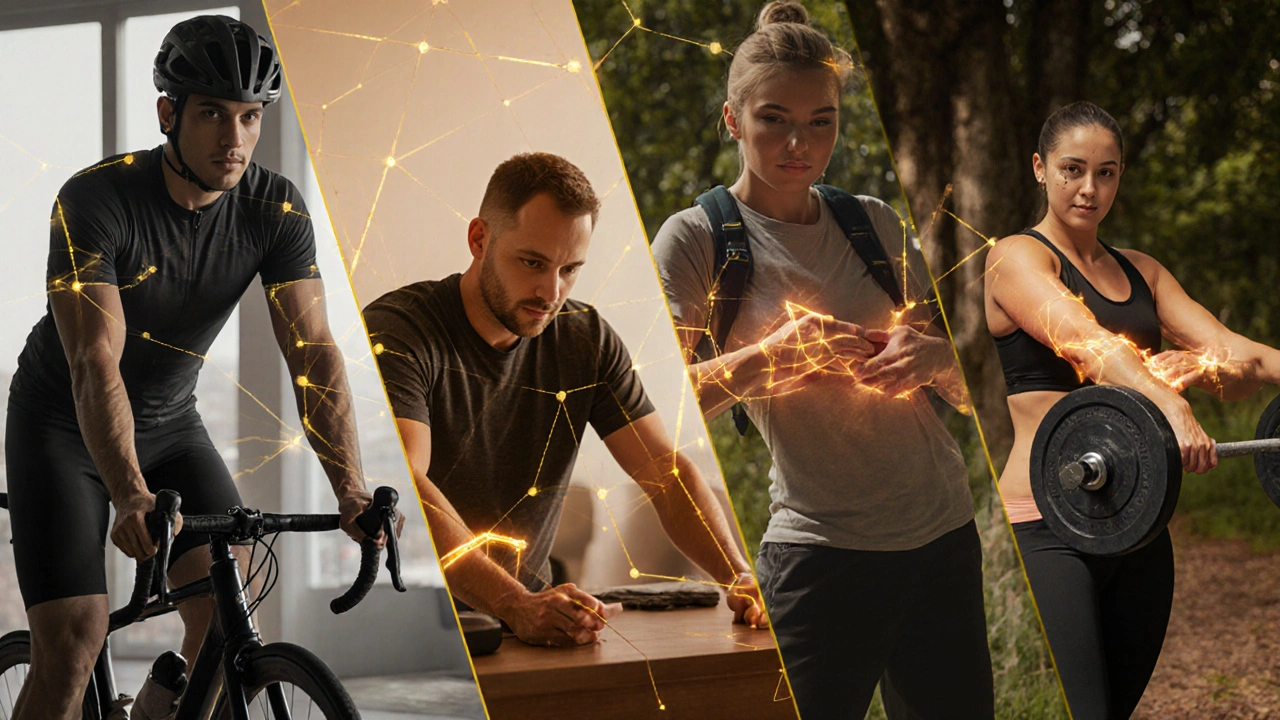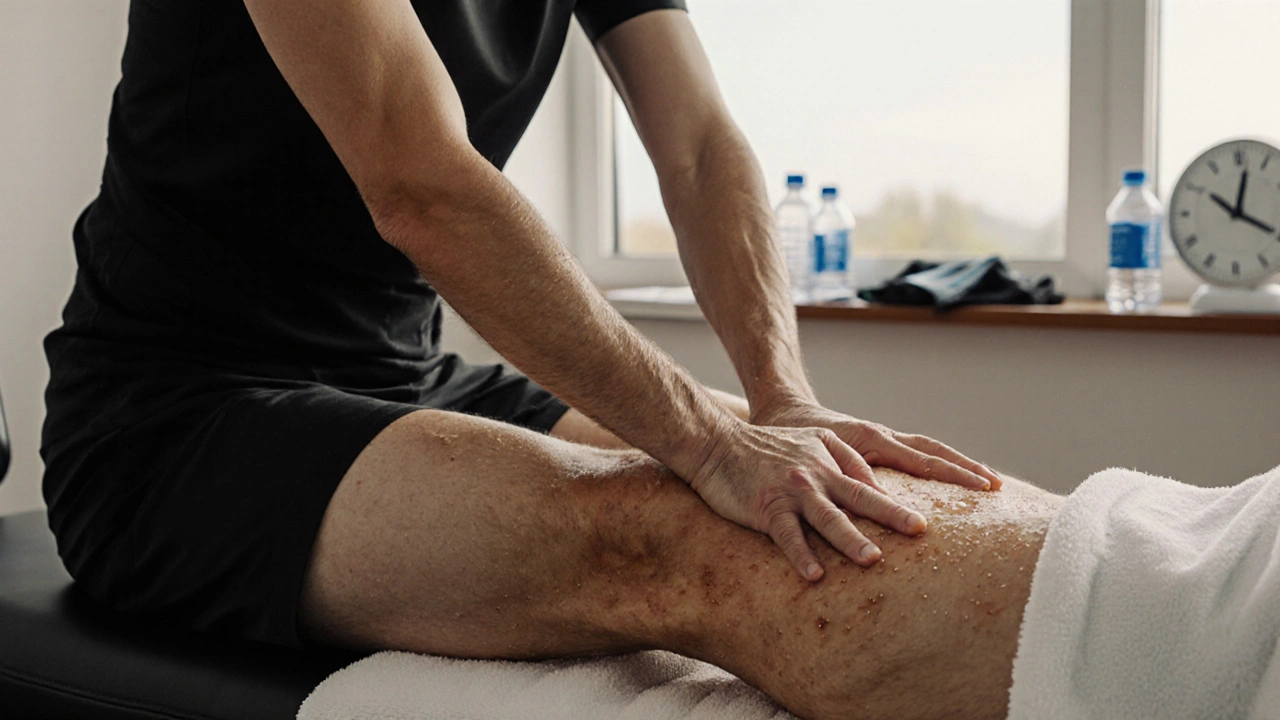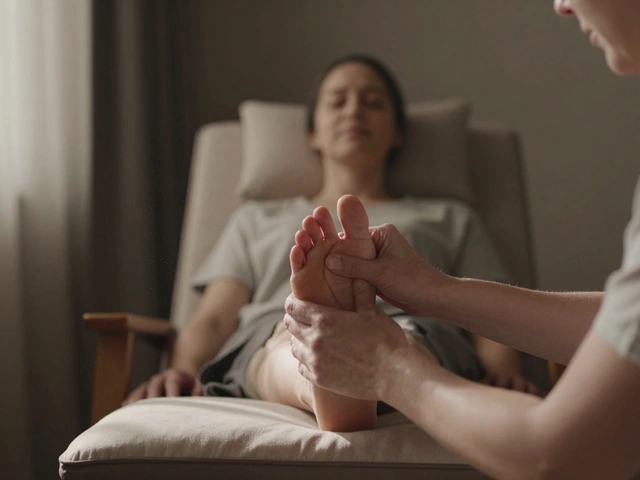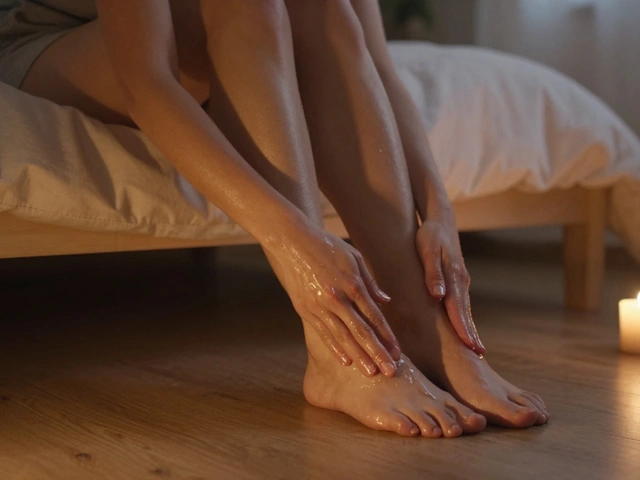Recovery Timing Calculator
Optimize Your Recovery
Choose your activity and timing to see the science-backed benefits of sports massage for your specific situation.
Recovery Benefits
Select your activity and timing to see the expected benefits
Ever hit a wall during training? You’re putting in the hours, eating right, sleeping enough-but your muscles feel tight, sore, or just plain sluggish. That’s not laziness. It’s your body screaming for more than just rest. Sports massage isn’t just for pros. It’s the quiet secret behind every athlete who pushes past their old limits.
What Sports Massage Actually Does
Sports massage isn’t a deep tissue session with lavender candles. It’s targeted, science-backed work done on muscles used in movement. Think runners, cyclists, weightlifters, even weekend warriors who hike or play soccer. The goal? Improve blood flow, break up adhesions, and reset muscle tension so your body can recover faster and move better.
Unlike relaxation massage, sports massage uses specific techniques: deep effleurage to warm tissue, petrissage to lift and squeeze muscle fibers, friction to break down scar tissue, and trigger point therapy to release knots that pull on your joints. These aren’t guesses-they’re methods backed by studies from the British Journal of Sports Medicine showing reduced muscle soreness and improved range of motion within 48 hours.
One 2023 study tracked 120 amateur runners after a half-marathon. Half got sports massage within two hours. The other half rested. The massage group reported 37% less muscle stiffness and returned to training 2.1 days sooner on average. That’s not magic. That’s physiology.
Why Your Muscles Need It After Training
Every time you push hard-whether it’s sprinting, lifting, or jumping-you create tiny tears in muscle fibers. That’s normal. But if those fibers stick together because of inflammation or lack of movement, they form adhesions. Think of it like dried glue between muscle layers. That’s what makes you feel stiff, even if you’re not sore.
Sports massage physically separates those stuck fibers. It also flushes out metabolic waste like lactic acid and cytokines that build up during intense exercise. Your lymphatic system doesn’t have pumps like your heart. It relies on movement-and massage-to clear out the junk. Without it, recovery slows. Performance plateaus.
And it’s not just about soreness. Tight hip flexors from cycling? That can throw off your posture and strain your lower back. Chronic shoulder tension from swimming? It limits your stroke and invites impingement. Sports massage doesn’t just feel good-it fixes imbalances before they become injuries.
When to Get It (Timing Matters)
Not all sports massages are the same. Timing changes the effect.
- Pre-event (24-72 hours before): Light, stimulating strokes to warm muscles, increase circulation, and reduce anxiety. Avoid deep work-it can leave you too loose or sore.
- Post-event (within 2 hours): Focus on flushing waste and calming inflammation. Short sessions (30-45 minutes) work best. Don’t wait until the next day-you lose half the benefit.
- Recovery (days 2-5): Deeper work to break down scar tissue and restore full range of motion. This is where you fix the niggles before they turn into injuries.
- Maintenance (weekly or biweekly): For serious athletes or those training 5+ days a week. Keeps muscles pliable, prevents chronic tightness, and catches problems early.
One cyclist I worked with in Portsmouth trained 15 hours a week. He skipped massage until his IT band flared up. After three weekly sessions focused on his quads and glutes, his knee pain dropped 80% in two weeks. He didn’t stop training-he just started recovering smarter.

Who Benefits Most (It’s Not Just Athletes)
You don’t need to compete to need sports massage. If you:
- Do HIIT workouts three times a week
- Walk your dog uphill every morning and feel tight hamstrings
- Stand all day at work and get lower back stiffness
- Play weekend sports and feel slower each season
Then you’re already an athlete in your own right. Sports massage works for anyone whose body takes repeated stress. It’s not about being elite-it’s about being consistent. And consistency needs recovery.
Even desk workers who sit 8 hours a day develop shortened hip flexors and rounded shoulders. Sports massage can reverse that. One 2024 study of office workers showed that after six weekly sessions, 78% reported improved posture and reduced neck pain. The same techniques used on marathoners help people who just want to bend down and tie their shoes without groaning.
What to Expect in a Session
First, no undressing to your underwear unless you want to. Most sessions are done with light clothing or towels. A good therapist will ask about your training, injuries, and goals. They won’t just start rubbing.
The session usually lasts 45 to 75 minutes. You’ll feel pressure-sometimes intense-but it shouldn’t hurt. If it does, speak up. Pain triggers muscle guarding, which defeats the purpose.
You might feel sore for a day after a deep session. That’s normal. Drink water. Move gently. Don’t skip your next workout-just ease into it. Your body is rebuilding.
And no, it won’t fix everything. If you’re dealing with a torn ligament or nerve pain, see a physiotherapist. Sports massage is a partner to rehab, not a replacement.

How to Find a Good Practitioner
Not everyone who calls themselves a “massage therapist” knows sports massage. Look for:
- Certification in sports massage (not just general massage)
- Experience working with athletes or active clients
- Willingness to ask about your training schedule
- Clear communication about what they’re doing and why
Avoid places that push packages or upsell unnecessary add-ons. A good session costs between £50-£80 in the UK. If it’s cheaper, ask why. You’re paying for skill, not just time.
Ask for referrals from local running clubs, gyms, or physio clinics. In Portsmouth, the Triathlon Club has a list of trusted therapists. That kind of word-of-mouth still matters.
What Happens If You Skip It
Skipping sports massage won’t kill you. But it will cost you.
Over time, tight muscles pull joints out of alignment. That leads to compensations-like favoring one leg, arching your back, or shifting your shoulder. Those tiny adjustments add up. Before you know it, you’re not just slow-you’re injured.
One runner I knew kept training through nagging knee pain for six months. He thought rest would fix it. It didn’t. He ended up with patellar tendinopathy. Two months of physio. Three months off running. All because he skipped weekly massage that could’ve caught the tightness early.
Sports massage is insurance. You don’t need it every day. But when you’re pushing your body, you need it regularly. Otherwise, you’re not training-you’re just wearing yourself down.
Make It Part of Your Routine
Think of sports massage like stretching or foam rolling-but deeper, faster, and more effective. You wouldn’t skip warm-ups. Don’t skip recovery.
Start small. One session a month. Then two. Track how you feel: Are you sleeping better? Moving easier? Recovering faster? You’ll notice.
And when you do? You’ll find yourself pushing harder. Longer. Stronger. Not because you’re stronger than before-but because your body can finally keep up with your will.
Can sports massage help with chronic pain?
Sports massage can help manage chronic pain caused by muscle tightness, scar tissue, or overuse, like IT band syndrome or plantar fasciitis. It won’t fix structural issues like herniated discs or arthritis, but it can reduce the muscle tension that worsens those conditions. Always pair it with professional diagnosis if pain lasts more than two weeks.
How often should I get a sports massage?
For casual athletes: once a month. For regular trainers (3-5 days/week): every 2-3 weeks. For elite athletes or those in heavy training phases: weekly. Listen to your body-if you’re feeling stiff or slow, it’s time.
Does sports massage hurt?
It should feel intense, not painful. Deep pressure is normal, but sharp or burning pain means you’re triggering a protective muscle spasm. A good therapist will adjust pressure and explain what they’re doing. Communication is key.
Can I do sports massage myself?
Foam rolling and trigger point balls help, but they can’t replicate the precision of a trained therapist. You can’t effectively release deep adhesions or target specific muscle layers on your own. Self-care is great for maintenance-but professional sessions are for breakthroughs.
Is sports massage only for runners?
No. It helps cyclists, swimmers, weightlifters, dancers, hikers, and even people with physically demanding jobs. Anybody who moves their body hard and wants to move better can benefit.
If you’ve been hitting your limits and wondering why you’re not breaking through, the answer might not be more training. It might be better recovery. Sports massage isn’t a luxury. It’s the missing piece in your performance puzzle.







